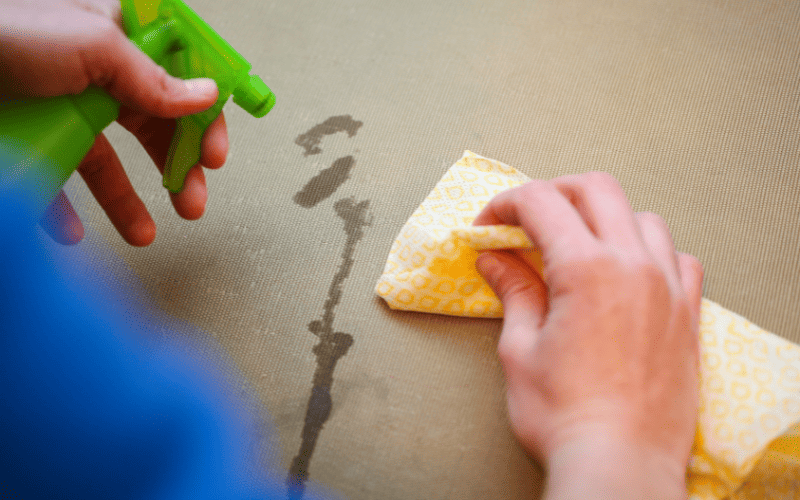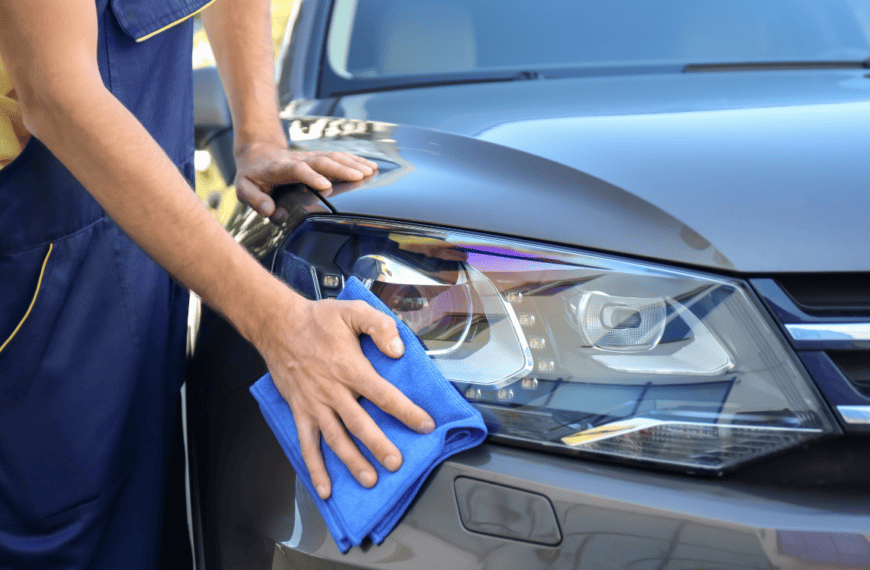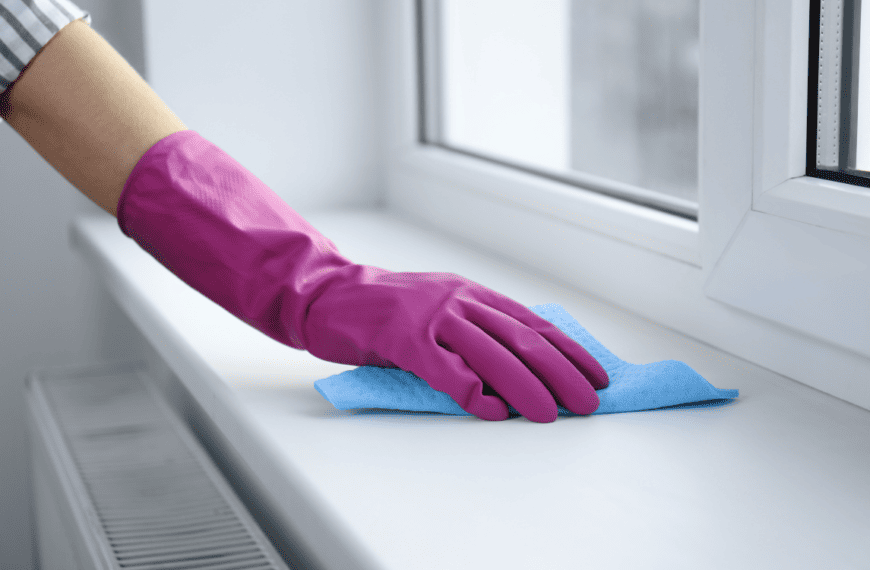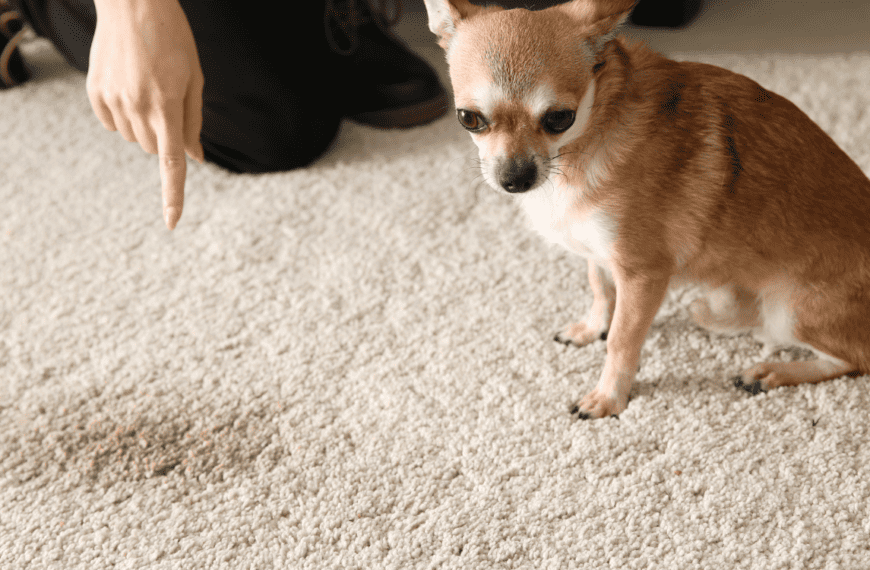Removing oil stains from clothing is one thing, but you can’t pick up a couch and throw it in the washing machine. Whether you spilled a little chicken soup or someone wiped their potato chip grease stains on the couch during the big game I’ve got DIY methods to show you how to get oil stain out of couch.
Don’t delay this process; the sooner you start on your oil stain, the better your chance of returning your couch to normal.
How to Get Oil Stain Out of Couch?
As soon as you notice an oil stain or grease stain on your couch, dab it with a paper towel. Don’t rub the stain, and don’t soak it. Sprinkle baking soda over the area and allow it to sit for 30 minutes. Vacuum the baking soda. If there is some additional residue, repeat the baking soda process, then use a liquid dish soap on an old toothbrush to try and break up the stains.
What to Do Immediately with Fresh Oil Stains?
The quicker you deal with grease stains and oil stains, the easier they are to remove. I know your instinct is to rub the stain, but don’t do that. Instead, gently blot the oil stain with a dry paper towel.
Methods For Removing Oil Stains From Couch
Until we implemented the “no eating on the couch” rule in our house, I had my fair share of oil and grease stains to remove. I’ve tried each of these methods, and some work better than others. My favorite will always be the baking soda method.
Baking Soda
If I had to tell you to put one magic stain fighter in your house, it would be baking soda.
- Dab the oil stain with paper towel
- Sprinkle baking soda on the oil stain
- Let it sit for 30 minutes
- Use a vacuum cleaner brush attachment and clean the baking soda off
- Repeat until stain disappears
No baking soda? No problem. Here are 7 other methods I recommend for dealing with the grease stain.
Cornstarch
Cornstarch works very much like baking soda to remove a grease stain. I’ve used cornstarch alone (without having to use a mild dish soap or a detergent) to completely soak up an oil stain.
- Blot the stain with paper towels
- Sprinkle cornstarch onto the grease stain
- Allow for it to sit for 30 minutes
- Vacuum the cornstarch up and repeat until the oil is gone
Alcohol
Vodka does a good job of lifting grease stains off upholstery furniture. Alcohol and oil have similar polarities in their molecules, so they won’t repel each other the way water and oil do.
- Take a small amount of vodka and put it on a clean cloth
- Blot the stain without soaking the couch
- Vodka should pull the stains from upholstery, especially when they are fresh
- Use a little warm soapy water to blot the area again and remove the alcohol residue
Detergent
Laundry detergent, especially with oxygen bleach, is designed to break down oil and grease stains.
- Take an old toothbrush and put a little laundry detergent on the end (liquid or powder works)
- Dip the toothbrush in warm water and work on scrubbing the stain
- Use a damp cloth to keep blotting the area so you don’t soak the couch
- This is not a great solution for leather; it’s best on cotton, microfiber, and nylon couches
Baby Powder
For the baby powder method, follow the same procedure with any dry cleaning solvent like baking soda or cornstarch.
- Sprinkle baby powder on the stain until it is completely covered
- Let it sit on the grease stains for 30 minutes
- Vacuum the powder up
- If the oil stain stays, use a little dish soap and water to scrub and break it up
Hydrogen Peroxide
I’ve been keeping a small spray bottle of hydrogen peroxide around to deal with stains of all kinds. Peroxide is inexpensive and effective in a variety of stain removal projects.
- Test in an inconspicuous area before applying to the stain
- Spray a small amount of peroxide on the stain
- Allow it to dry, and then use a microfiber cleaning cloth with a little soap to remove the rest of the stain
WD-40
Although WD-40 is a popular method for oil removal, I have had issues with it creating residue and additional stains. But, if this is all you have, here are the steps:
- Blot the stain dry with a paper towel. If needed, use a plastic utensil to scrape any excess
- Spray a small amount of WD-40 on the stain
- Take a paper towel and blot the stain again
- Use a little liquid soap and water on a clean cloth when the stain has released to clean the area of the couch
Liquid Upholstery Cleaner
Commercial upholstery cleaners can do a good job of removing stains from upholstery. I prefer to use a DIY method. However, if you have a specific couch fabric you are concerned about, the upholstery cleaner could be a good solution. Make sure to follow the manufacturer’s instructions and your couch’s care label.
Techniques and Tips to Remove Oil Stains From the Couch
Here are a few tips for getting excess oil and grease stains out of your couch, the most important thing to remember here is not to make the situation worse by compounding it with another stain!
How Much Water to Use?
Use very little water when working on a grease or oil stain. You don’t want the stain to spread; you also want the couch to air dry within minutes or hours (not a day!).
What if The Stain is Set?
The best action you can take against a stain is to immediately blot it. If you have missed this window, you will want to sprinkle baking soda on the area, vacuum it up, and then use something like a baby wipe to grab any excess oil. You may have to repeat the process several times.
Steam Cleaning and Upholstery Cleaners
Steam cleaning and upholstery cleaning is another great option after a stain has set. However, I do like to first use the baking soda method as I don’t find the steam cleaner soaking up the excess oil all that well.
Testing Fabrics Before Treating
Spot-test all cleaning solutions (DIY or commercial) in an area of your couch that you will not see. I’ve had WD 40, and even peroxide, cause some issues with discoloration on the couch. If you lift a cushion, there is often a good spot for testing.
Abrasive Cleaners and Damage
Whether you have a fabric sofa or a leather couch, there is always a chance of damage from different cleaning methods. Gently work the product in and ensure you are not damaging the fibers.
Fabric Type Considerations
Some fabrics and materials, like leather, can be very difficult to clean, and at the same time, you can damage the affected area if you use the wrong cleaning solution.
- Cotton: both dry and wet cleaning solutions tend to work fine on cotton couches
- Microfiber, Polyester, Chenille, and Velvet: always test an area in an inconspicuous location to ensure it will not damage or leave residue, and brush with a dry towel to return the fibers’ natural look
- Leather: use upholstery cleaners specifically designed for leather couches, avoid excess water, gently scrub with non-abrasive cloth









